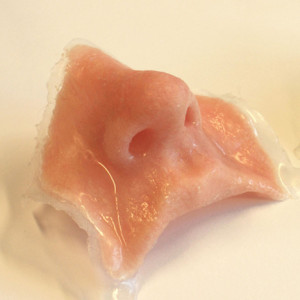3DPI’s newest writer, Davide Sher, recently relayed the stunningly real prosthetics of Fripp Design and Research, based at the Advanced Manufacturing Park of Sheffield in the UK. The company behind the lifelike noses seen in Davide’s post has plans to officially launch the 3D printing technology used to create its silicone prostheses, Picsima.
The company originally used a feasibility grant from the Technology Strategy Board High Value Manufacturing to develop the process for manufacturing full-colour, realistic prostheses. Fripp Design and Research was then able to print a fully-realized prototype within 12 weeks, calling the technology Picsima. After prostheses work with groups such as the Wellcome Trust, The University of Sheffield and Manchester Metropolitan University, the SME has begun to consider how to make their unique 3D printing technology available to others. Tom Fripp, Managing Director at Fripp Design and Research, explains how the process works:

The Picsima process has already proven its ability to create full-colour, fully functional prototypes with a wide range of materials, a shore hardness of less than 25 (which is relatively soft if I understand this Wiki page correctly), and the ability to withstand temperatures as low as 60˚ below zero and greater than 200˚.
Now, the company has to decide how to share this technology with others, while still maintaining a profit, with co-founder and majority shareholder, Steve Roberts, saying, “Tom and I set the company up to invest our resources to develop our own IP for either license or sale. This is still our preferred model, however the idea of becoming the next big manufacturer in 3D Printing also has its appeal.” Roberts summed up the company’s options simply, “Do we sell it, licence it or make it?”
It will be interesting to see which route they take ….


